Our Technology
TLC Revolutionary Co-Graphene Composite Technology
TLC has successfully developed a commercial production process to produce graphene composites. It has the following advantages:
Low Cost
The price of graphite is around $1/lb. The processing cost is about $0.50/lb. It is comparable to the price of general plastic.
High Output
The current mass production machine can produce 1-2 metric tons of composite materials per day, which equals 300-600 metric tons per year. If you need to increase production capacity, you can increase the number of machines. In the future, each mass production machine will produce 10 to 20 metric tons of composite materials per day, or 3000 to 6000 tons per year.
Excellent Quality
Our mass production machine continuously produces composite materials and its quality is controlled by operating parameters. Therefore, the quality is stable and the composite material of the same specification can be repeatedly produced. The amount of graphite added can range from 1% - 30% and the degree of graphene exfoliation can range from high to low exfoliation. By using specific resin and incorporating a certain percentage and degree of exfoliation of graphite to graphene, composites can be specially formulated to meet the requirement of the product.
Complete Uniformity
Graphene is continuously exfoliated from graphite during the manufacturing process. It immediately mixes with liquid plastic. Therefore, graphene can maintain a 100% uniform distribution in the composite. It will not re-agglomerate with another graphene back to graphite.
Increased Performance
The newly exfoliated graphene will split into smaller pieces where each 300-micron graphite cube can produce up to 900 million pieces of 10 by 10-micron size single layer nanoflakes. The free radical around the edge of each flake will form covalent bonds with the molecules nearby. This covalent bond firmly binds the graphene and plastic molecules together and ensures that the graphene flakes will not separate during production or in use. Covalent bonds can increase the hardness of the composite by 200% or even 500%.
Environmentally Friendly
Because the TLC process does not use acid or alkali, it will not cause environmental pollution. As it increases the hardness of the plastic, it can actually reduce the amount of plastic used and thus reduce the amount used for plastic recycling. It also reduces the carbon footprint of products to combat global warming.
Health & Safety
Like other nanomaterials, graphene is difficult to be filtered out once it is released into the air. The long-term impact of graphene is a matter of common concern for human health. The TLC process does not release any individual graphene components during production nor overtime as consumers use the product. Our graphene composites are safe, non-hazardous, and will not cause negative effects on a person's health.
COMPOSITE ATTRIBUTES
- Rigid Polymers
- Tensile modulus
- Flexural modulus
- Impact resistance
- Electro conductivity
- Thermo conductivity
- Fire performance
- Hydrolysis resistance
- UV resistance
- Heat degradation
- Scratch/abrasion resistance
- Elongation at break
- Cyclical loading
- Compression strength (foam)
- Density (foam)
- Thermo expansion/contraction
- Mold abrasion
- Melt viscosity
- Creep
- Films, Tapes
- Tear resistance
- Puncture resistance
- Permeability
- Tribology
- Surface friction
- Long-term wear
- Heat conductance
- Thermoplastic Elastomers
- Ability to rebound
- Resistance to compression
